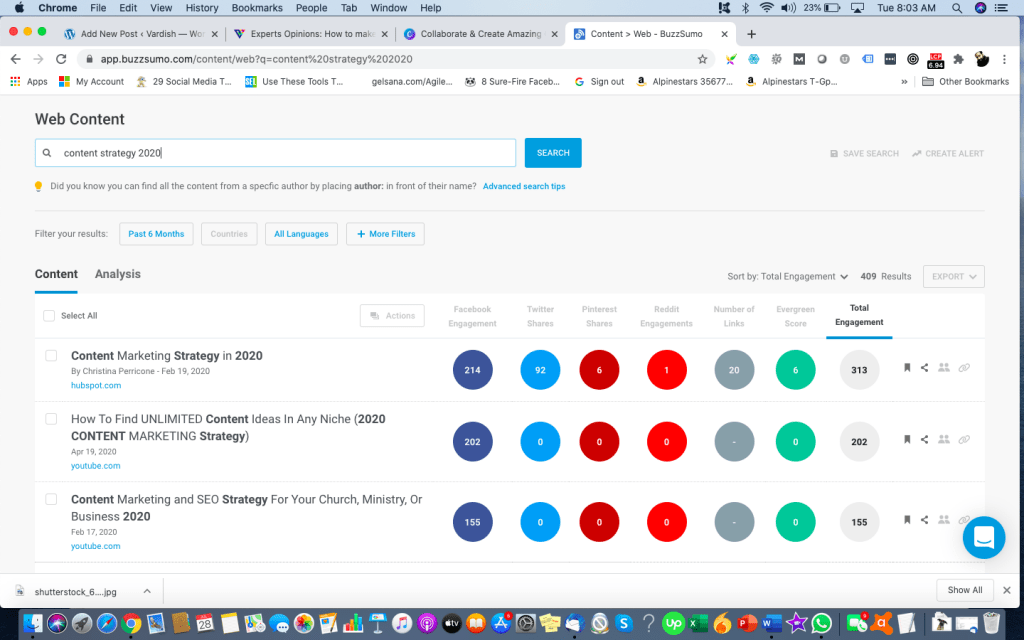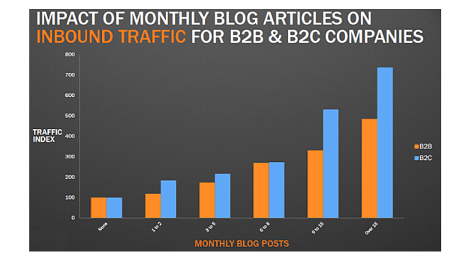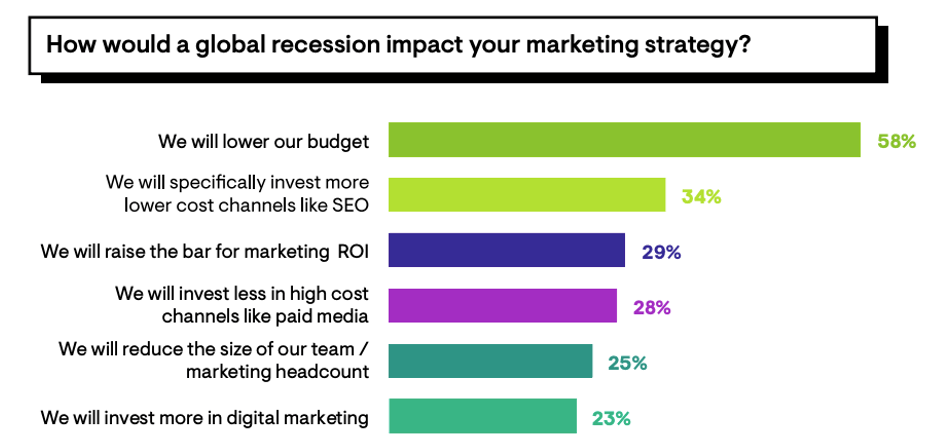28
Experts Opinions: How to make your content strategy in 2020?
One is “How to Put Your Business into Top Gear” which was published in 2014.
The other is “Coronavirus: Understanding Its Impact on Life and Business” that was uploaded in 2020.
You will find a stark difference in their creation.
A 2014 blog is an absolute textual blog and lacks references, visuals or sources. Talking about 2020 blogs, it includes all details, stats, and visuals to look appealing and engaging.
But they have one thing in common—both are created according to the content trends of their respective years.
The point is here that content creation has changed a lot in the course of these six years.
Content strategies that worked in 2014 will not work in 2020.
This is because the search engines have become more user-oriented while people like you and me look for a quick solution that appears as soon as we key in the query.
In 2020, content needs to be engaging, authentic, and “problem-solving” to ace the ranking game.

Avoid Writing Thin Content in 2020:
Review this piece of content:
“Are you looking for the best software development and consulting services? We are the best software development and consulting services. Our best software development and consulting services are available at reasonable prices.”
Being stuffed with unnecessary keyword usage, this piece sounds ridiculous. Isn’t it?
Interestingly, such pieces of content used to get good ranking before the advent of the Google Panda algorithm in 2011. This algorithm aims to drop the rankings of “thin content” or low-quality content.
However, spammed or thin content hasn’t gone out of practice yet. In fact, it has evolved in other forms like scrapping. Scrapping involves duplicate content or the content that is rehashed or manipulated with the use of synonyms.
But keep in mind that thin content only hurts your ranking and nothing else.
Cautioning against such practices, Todd Friesen, director of digital strategy and SEO at Salesforce, opines,”
“It’s (thin content) not going to work anymore in the content world. Everybody’s content has gotten good. I can go who wrote this piece of crap and they’re gonna move on because you know the bar has been set.”
The number one content strategy to imply in 2020 is to avoid thin or low-quality content. Instead, create the content that can boost engagement and prompt users to take action.
Here are some basic ways to ensure the quality of content:
- Avoid keyword stuffing. Use semantic keywords.
- Say no rehashing or sentence manipulation.
- Read the content for relevancy and quality.
Address any plagiarized content issue.
Best Content Strategy is to Address the Pain Points of Your Audience:
Have you ever thought why most of the search results are Quora answers?
And this is even surprising when your 2500-word article doesn’t rank for the same search query.
The reason is pretty simple—Quora covers the solution for that query which your blog fails to do.




Here we got our content strategy no. 2—the content should find and solve the customer’s problem. Most users expect blogs or any form of content to address their concerns.
It is worth to quote Carolyn Shelby, manager of SEO at ESPN, in this context:
“People are that impatient and crazy so the trick is just to make sure that you know what your users, your target audience wants and hand it to Google on a silver platter and make it easy for Google to ingest it and dice it up.”
She means that the content should be logical, easy to understand, and exceed the user’s expectations.
If your content is all about making tea, cover the points what to do when tea becomes excessively sweet as it can be a common problem associated with the tea prep.
Secondly, you should know how to present your information. It not only helps your content to be captured by Google but also makes it searchable for voice assistance devices or tools.
Therefore, present the key points with headings, bullet points, and short sentences.
Above all, you should be aware of your target audience and their problems. It will help you find the right solution as well as the way to present them.
Use Best Content Curation Tools as Part of Your Content Marketing Plan:
Content curation is another important part of your content strategy.
It is the process of gathering information from a variety of sources, including stats, expert quotes, and citations. This way, it helps determine the reliability and authenticity of your content.
And it is also true that this process is quite cumbersome. Maybe you need to burn your midnight oil to find the right sources for your content. Needless to say that such an exhaustive process can hinder your “creative juice” as well as time to create content.
That’s why using content curation tools makes up as our content strategy no. 3!
Content curation tools automate the content curation process. They help you locate relevant content or help you with new content ideas.
For example, there is a tool called Anders Pink that crawl millions of webpages to create daily briefings. These briefings can be then be sorted out for specific keywords.
And who can forget Buzzsumo that provides you a list for the most shared content on the subject you are looking for. Plus, you can sort the list using categories like content type, follow authors, date, and more.
As an added bonus, you can find out the latest trends as well as the most shared content. You can then use all these insights to create relevant and authentic content with all the latest information.
Even Buzzsumo helped me curate content for this topic. Here’s how…




Flipboard is also counted among quality tools for its ability to fetch content from reliable and trusted sources.
Freshen Up Your Old and Dry Content:
This new content strategy also requires you to work over your old and dry topics which can be as simple as “How to Plant a Tree” or “How to Choose Headlines.”
This is because such topics are available at thousands of websites, giving your visitor a range of options to choose from. Why one would read your blogs if they have thousands of such pieces at their disposal?
One thing you can do is to freshen up those old pieces by using infographics, quotes, podcasts, visuals, and videos. It will make your content attractive enough to encourage the audience to get engaged with it.
Optimize Your Content Marketing Approach for Voice Search:
Hello Siri, how to do push-ups? And Siri displayed these results—




Well, many people use voice assistance like Siri or Amazon Echo to get help with their daily tasks. Using such devices make sense as they are quick and simple than typing.
According to one study by Forbes, nearly 50% of all searches will be voice searches by 2020.
It simply means that your content should be activated for voice search. After all, voice search is becoming a key ranking factor.
Here’s how to optimize your content for voice search…
- Look for phrases and longtail keywords.
- Focus on natural language (the way we talk is different than the way we write.)
- Make it easy to read as well as scannable.
- Create a FAQ section or blog around conversational but specific questions associated with your industry.
- Optimize your content for Local SEO keywords such as “digital marketing agency near me.”
Add Content Based Videos to Stand out in 2020:
Over the years, a video has become an integral part of content strategy.
Video content is more appealing and shareable than its textual counterpart. This increases the chances of high organic ranking in search results and better conversions as well.




(Image Source: https://www.impactbnd.com)
One of the key benefits of video content is that they make complicated concepts easy to understand. For example, explainer videos can be used to educate the users on your products. Or reviews can be made more authentic with videos as users can see a person using them. Facebook Live can be used to launch your new products.




(Image Source: https://www.impactbnd.com)
Last But Not Least — The Frequency of Content Publication in 2020:
How often should you publish the contents?
Well, there is no straightforward answer to this.
Some say that quality is important. Some advocate for quality. However, the fact is that both are important for a fruitful content strategy.
It will be challenging to gain any traction with a sluggish or inconsistent publishing schedule even for your great piece of content. A single piece of great content might not benefit your business or brand in the long term.
Having a consistent content schedule and publishing frequent content can help you make the most of your content marketing.
HubSpot has found that the publication of four blogs per week can increase the traffic up to five times more than those that publish once a week.




(Image Source: HubSpot)
But that doesn’t mean you need to work as a content mill. Providing quality and value in the content should be your topmost priority.
Over to you:
So these are some key points to be included and implied in your content strategy for 2020 and beyond. It is all about understanding your users and their needs and create content accordingly. Besides, you need to prioritize videos as well as optimize your content for voice search. Once you are done with all these parameters, make sure to create a realistic content publishing schedule.
What do you think? Let me know by commenting below!!!


